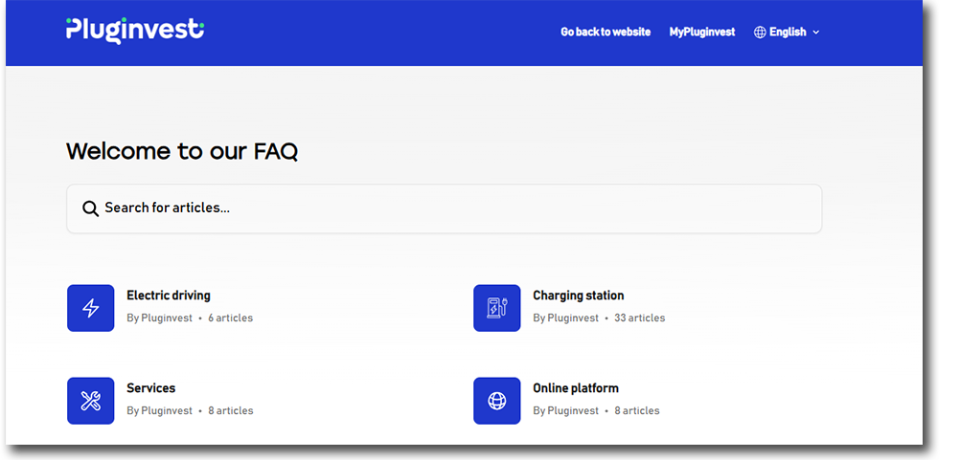FAQ
Pluginvest FAQ
Discover everything about eMobility on Pluginvest’s FAQ platform!
Here you’ll find everything from eMobility fundamentals to tips & tricks and user guides. You can expect topics such as:
-
Introduction to electric driving
-
Everything about our charging stations & installations
-
Information about our services
-
Guides for the MyPluginvest Platform
-
Additional information about charging cards
-
Legal framework and taxation
-
Support for the Easily Charged App
-
And more
